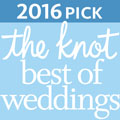Engagement Ring Guide
 Many of life's greatest pleasures require connoisseurship, art, wine and fine dining to name just a few examples. But selecting a diamond engagement ring is unique among these. Without a lifetime of jewelry-buying experience to guide you, the beauty of diamonds can even seem intimidating. At FirenzeJewels.com, we have over 75 years of experience at helping first-time diamond buyers learn how to buy an engagement ring. We are committed to using that knowledge to make your shopping experience with us both satisfying and educational.
Many of life's greatest pleasures require connoisseurship, art, wine and fine dining to name just a few examples. But selecting a diamond engagement ring is unique among these. Without a lifetime of jewelry-buying experience to guide you, the beauty of diamonds can even seem intimidating. At FirenzeJewels.com, we have over 75 years of experience at helping first-time diamond buyers learn how to buy an engagement ring. We are committed to using that knowledge to make your shopping experience with us both satisfying and educational.
With those principles in mind, these are the details you should look for when choosing diamond engagement rings.
The Diamond
The diamond is the focal point of the engagement ring. Its basic qualities are commonly referred to by the term "the 4 C's," which stands for cut, color, clarity and carat (see our article Diamond Education).
A diamond's size or carat weight is the main factor in determining its value. Cut, often confused with shape, refers to a diamond's proportions and finish, which determine the amount of light reflected through the diamond. Clarity refers to the absence of inclusions or blemishes in diamonds. Color is usually "white," though a yellow or pink diamond engagement ring is a popular modern alternative.
As for shape, most diamond engagement rings feature a round diamond, but many other shapes are available. The princess cut diamond engagement ring, which is a square cut, is a very popular shape. Other diamond engagement ring shapes include:
- Emerald (rectangular with truncated corners)
- Radiant (similar to emerald, but has the sparkle of a brilliant cut)
- Cushion (square or rectangular with rounded corners and many crown facets)
- Asscher (squarish step cut with octagonal-like outline; often used in Art Deco jewelry)
The Metal
Platinum, yellow gold and white gold are the primary options when selecting a metal for an engagement ring. The platinum diamond engagement ring has become a very popular choice. It's more expensive than gold, but it's also stronger and more resistant to tarnishing or chipping. Yellow gold or white gold is the more classic look and the most commonly used metal. The gold is usually 18kt or 14kt (kt = carats). For more information, see our article on The Differences between White Gold and Platinum.
The Setting
The setting is how the diamond is attached to the metal on your diamond engagement ring. Engagement ring settings are often what people are referring to when they discuss the design or style of a diamond ring. Setting styles include:
Solitaire
Solitaire is the classic diamond engagement ring setting. The diamond is prominently displayed in a prong setting.
Side stone
A side stone diamond engagement ring, also known as a three-stone ring, features two smaller stones, one on either side of the primary diamond.
Cathedral
The cathedral setting is similar to the solitaire, only the band is split in two at the top to create an inner band that holds the prong and makes the diamond setting appear deeper.
Contour
In this setting, the band tapers upward on either side of the center diamond.
Bezel
The bezel is one of the safest possible settings for diamond engagement rings. It features a metal perimeter that covers the diamond on all sides.
In addition to these setting styles, many people choose bridal sets with both a wedding band and engagement ring. Another popular alternative is an antique diamond engagement ring or vintage engagement ring featuring designs inspired by Victorian, Art Deco and other periods.




















